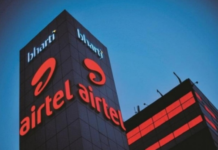By Bappaditya Chatterjee
Kolkata– Bankers are looking forward to the Reserve Bank of India’s (RBI’s) new scheme to tackle bad loans. But they are also keeping their fingers crossed owing to its limited applicability, as also the absence of provisions to cut down lengthy legal processes.
Though previous tools to arrest mounting non-performing assets (NPAs) did not provide satisfactory results, bankers have started examining the applicability of the ‘Scheme for Sustainable Structuring of Stressed Assets’ (S4A) introduced last month by the apex bank.
Crisil has estimated weak assets in the Indian banking system to touch a high of Rs 800,000 crore by the end of the current fiscal. The RBI’s latest Financial Stability Report suggested that the GNPA (Gross non-performing asset) ratio might rise to 8.5 per cent by March 2017 from 7.6 per cent in March 2016.
The new scheme envisages banks will need to divide the existing debt of a company into “sustainable” and “unsustainable”. The sustainable part is that share of the debt that can be serviced by the company on the strength of its current cash flows.
As for the unsustainable amount, banks are allowed to convert that part of the debt to equity or quasi-equity instruments. The scheme provides for determining the sustainable amount of the debt through a techno economic viability (TEV) study to be conducted by an independent body.
The TEV study is required by the banks to understand the risks inherent in any restructuring of loans.
“TEV study is important for the projects, because it helps to determine which part is sustainable and which is not. There are ifs and buts with regard to S4A,” said United Bank of India’s Executive Director Sanjay Arya.
“But shortcomings or weaknesses, if any, would be detected after the scheme is tested. Not many proposals have come so far,” Arya told IANS. He also felt the scheme may not impact the lengthy legal and judicial processes.
“The scheme is apparently fine but the huge time taken for judicial and legal processes is not going to go away,” Arya said.
Another top banker said the applicability of the scheme to various stressed companies was being looked into.
“We are currently examining the applicability of this scheme to various companies under stress. So far we have not approved any proposal under the scheme,” State Bank of India Managing Director (Corporate Banking) B. Sriram told IANS.
According to the scheme, it will cover projects that have started commercial operations and have outstanding loan of over Rs 500 crore. Thus there is limited applicability of the scheme.
“There are different schemes available. S4A is applicable to some stressed corporates while some others will not be eligible. The scheme is good and let us see, how it pans out,” said Dena Bank Chairman and Managing Director Ashwani Kumar.
Sriram said it was a meaningful scheme for some of the companies.
“It gives opportunity to the promoter to restructure his business and service the debt. At the same time the scheme also ensures sacrifice on the part of promoters and incentivises the successful implementation of the scheme due to improvement in value of the company,” he said.
In a bid to deal with stressed companies, the RBI had earlier formulated schemes like corporate debt restructuring (CDR), joint lenders forum (JLR), strategic debt restructuring (SDR), A5/25 scheme and sale of assets to asset reconstruction companies. But the level of non-performing assets has continued to rise.
Asked to compare the previous schemes with S4A, Sriram said: “The schemes have different purposes and benefits. They can be applied to different companies facing different types of issues.”
Another leading rating agency was bullish about the independent TEV study envisaged by the new scheme.
“In the past, accounts, which were refinanced/ restructured after TEV studies, have not shown satisfactory performance,” said ICRA’s Senior VP and Co-head Financial Sector ratings Karthik Srinivasan.
The key difference between SDR and S4A lies in that while the earlier formulation prescribes change in existing promoters, S4A as such does not prescribe change in existing promoters, Srinivasan told IANS.







